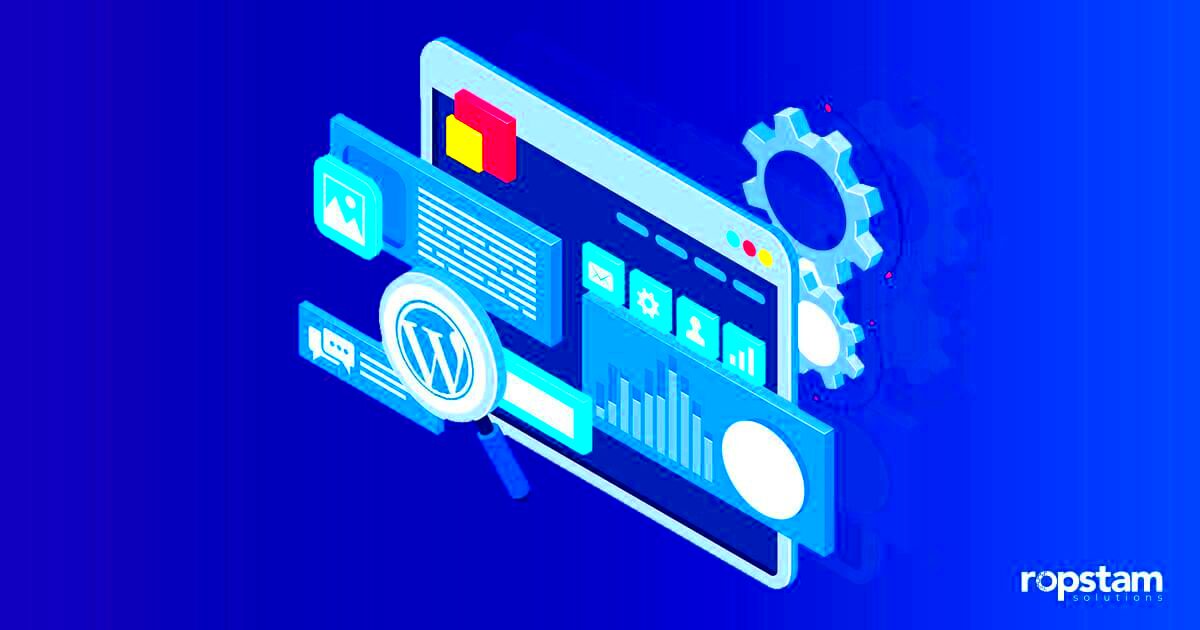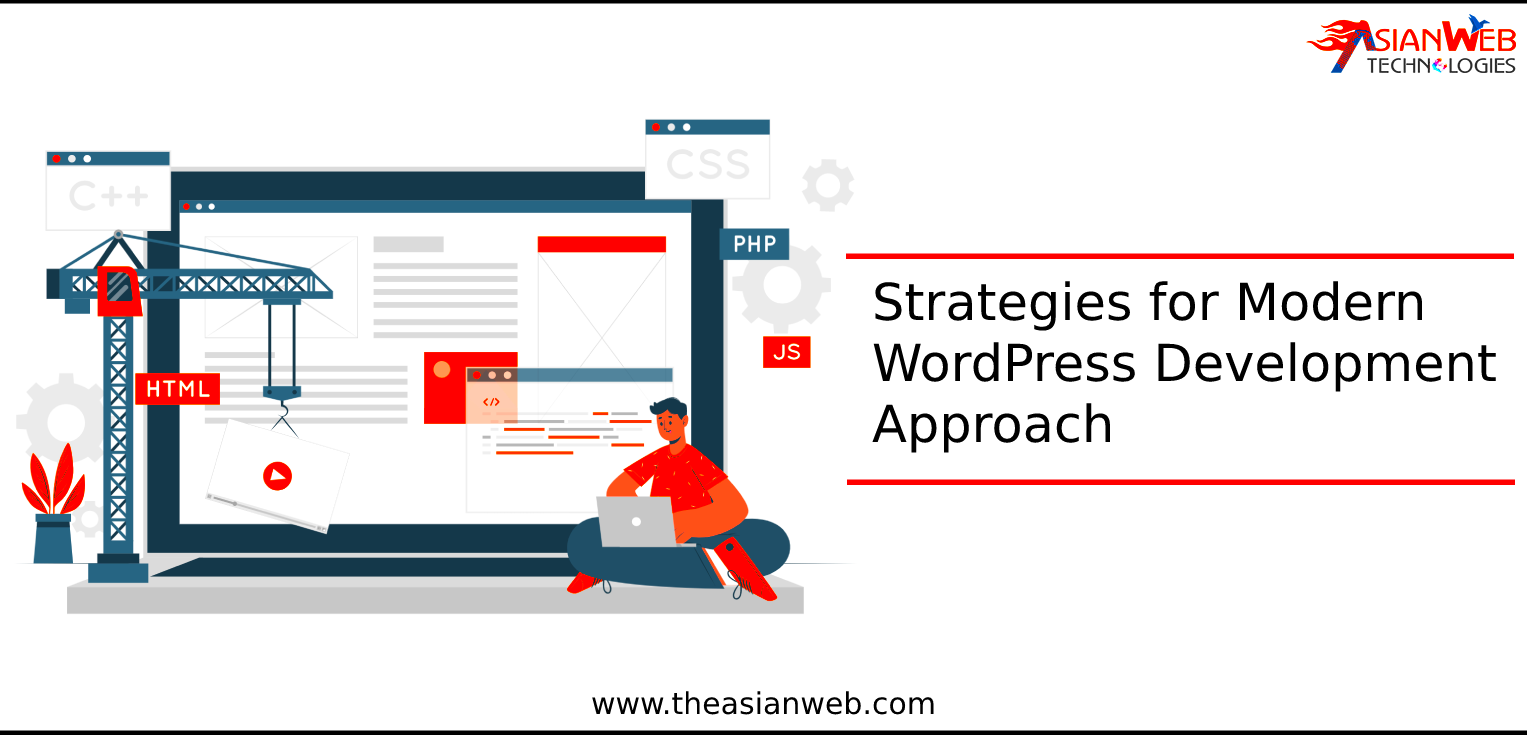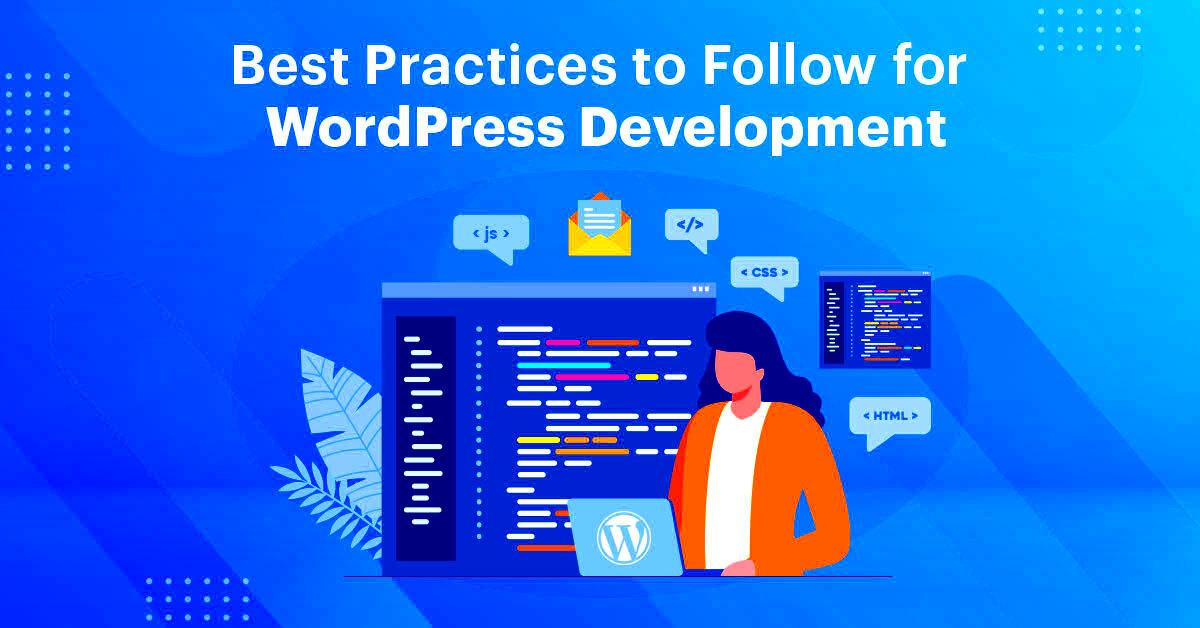WordPress development has gained immense popularity, and for a good reason. It’s the backbone of over 40% of websites today, offering a robust platform for creating anything from blogs to e-commerce sites. As we embark on a WordPress project, understanding the foundational aspects of development is crucial. This guide will walk you through best practices, ensuring that your projects run smoother and yield better results. Are you ready to dive into the world of
Understanding Project Scope and Requirements

Kickstarting any project begins with a solid understanding of the scope and requirements. This step is vital in WordPress development because it sets the tone for what’s to follow. Here’s how you can effectively define this stage:
- 1. Identify Stakeholders: Engage everyone who will have a say in the project, from developers and designers to clients and end-users. Make sure all voices are heard.
- 2. Set Clear Objectives: What do you want to achieve? Whether it’s increasing traffic, improving UX, or boosting sales, defining your objectives will guide the development process.
- 3. Gather Requirements: Document what features and functionalities the website must have. This can include:
- Custom post types
- Plugins
- Mobile responsiveness
- SEO optimizations
- 4. Create a Project Timeline: Schedule tasks and deadlines to ensure the project stays on track. Utilize tools like Gantt charts or Trello boards to monitor progress.
- 5. Budgeting: Estimate costs for design, development, hosting, and any third-party services.
By clearly defining the project scope and requirements, you pave the way for a successful WordPress development project. It’s all about laying the groundwork to avoid scope creep and ensure everyone is on the same page!
Setting Up a Local Development Environment

When it comes to WordPress development, having a reliable local development environment is crucial. It allows you to create, test, and debug without the pressures of a live server. Plus, it enhances your workflow and minimizes risks for your live site. So, how do you set this up?
First off, you’ll need a local server environment. Some popular options include:
- XAMPP: A free, open-source cross-platform that provides all the necessary components to run WordPress locally.
- MAMP: Perfect for Mac users, but also available for Windows. It’s user-friendly and allows easy setup.
- Local by Flywheel: A development environment specifically designed for WordPress, offering one-click installs and other convenient features.
Once you’ve chosen your local server, here’s a step-by-step guide to get you rolling:
- Download and install your chosen local server application.
- Create a new folder in the server’s “htdocs” (XAMPP) or “Applications” (MAMP) directory for your WordPress project.
- Download the latest version of WordPress from WordPress.org.
- Unzip the WordPress files and place them in the folder you created.
- Set up a new database via phpMyAdmin that your WordPress site will use.
- Run the WordPress installation process by navigating to http://localhost/your-project-folder in your browser.
Once everything is up and running, you’ll have a safe space to play around with your projects without affecting your live website. Plus, local development environments offer the benefit of faster loading speeds and simplified troubleshooting. So roll up your sleeves and dive in!
Best Practices for WordPress Theme Development
Building a WordPress theme can be an exciting yet challenging endeavor. To ensure that your theme is not only aesthetically pleasing but also functionally robust, you’ll want to follow some best practices.
Here’s a checklist to guide you through best practices for WordPress theme development:
- Always Start with a Child Theme: If you’re customizing an existing theme, always use a child theme. This helps preserve original functionality during updates.
- Follow the WordPress Coding Standards: Familiarize yourself with the WordPress Coding Standards for PHP, HTML, CSS, and JavaScript. This ensures your code is clean and consistent.
- Keep it Lightweight: Avoid unnecessary code and bloated features. Optimization is key for speed and performance.
- Responsive Design: Ensure your theme is mobile-friendly. Use media queries and flexible layouts to adapt to different screen sizes.
- Incorporate Customizer Options: Use the WordPress Customizer API for theme settings. This allows users to modify the appearance without touching code.
Here’s a handy table outlining essential files and their purposes in your WordPress theme:
| File | Purpose |
|---|---|
| style.css | Contains the theme styles and metadata. |
| functions.php | Enqueues scripts, styles, and adds theme-support functionalities. |
| index.php | The main template file that displays your content. |
| header.php | Contains the HTML markup for the head section of your site. |
| footer.php | Contains the closing elements of your website’s structure. |
By adhering to these best practices, you’re not only creating themes that work seamlessly but also ensuring that your themes are adaptable and user-friendly. Happy coding!
5. Implementing WordPress Plugins Effectively
WordPress plugins are like the Swiss Army knives of a website; they can extend functionality, improve performance, and add unique features. However, to get the most out of them, it’s crucial to implement them effectively. Here are some best practices to keep in mind:
- Choose Quality Plugins: Always opt for well-rated, regularly updated plugins. Check reviews and see how often the plugin is maintained. This minimizes the risk of compatibility issues and vulnerabilities.
- Limit the Number of Plugins: More isn’t always better. Using too many plugins can slow down your website and increase the chances for conflicts. Aim to use only what’s necessary.
- Test Before Implementing: Before introducing a plugin on your live site, test it on a staging site. This helps identify any potential issues without affecting the user experience.
- Keep Plugins Updated: Just like themes and WordPress itself, plugins need regular updates to patch security vulnerabilities and improve functionality. Enable automatic updates where possible.
- Monitor for Conflicts: Sometimes, plugins can conflict with each other or with your theme. Keep an eye on your website’s performance and resolve any issues as soon as possible.
By following these practices, you can effectively implement WordPress plugins to enhance your site’s capabilities without compromising speed or security. Enjoy the freedom that plugins bring while being mindful of their impact on your overall site health!
6. Ensuring Security in WordPress Projects
Security should be at the forefront of any WordPress development project. With its popularity, WordPress is constantly targeted by hackers looking for vulnerabilities. So, how can you ensure your WordPress project remains secure? Let’s dive into some effective strategies:
- Regular Updates: Whether it’s WordPress core, themes, or plugins, keeping everything up to date is crucial. Updates often include patches for security vulnerabilities.
- Choose Strong Passwords: Ensure all user accounts have strong, unique passwords. Consider using a password manager to generate and store them securely.
- Implement Two-Factor Authentication: Adding a layer of security through two-factor authentication makes it significantly harder for unauthorized users to access your site.
- Use a Security Plugin: There are several reputable security plugins available that can help monitor for vulnerabilities, implement firewalls, and perform regular site scans.
- Backup Your Site Regularly: Backups could be a lifesaver in case of a security breach. Ensure that your backups are stored securely and ideally in multiple locations.
By taking these proactive measures, you can significantly bolster your WordPress project’s security. Remember, a secure site not only keeps your data safe but also builds trust with your audience!
7. Performance Optimization Techniques
In the fast-paced digital world, optimizing the performance of your WordPress site is crucial. A slow website not only frustrates users but also impacts your search engine rankings. Here are some effective performance optimization techniques:
- Use Caching Plugins: Caching plugins like W3 Total Cache or WP Super Cache can dramatically reduce loading times by storing static versions of your pages. This means fewer server requests!
- Optimize Images: Large images can slow your site down. Use tools like Smush or ShortPixel to compress images without losing quality. Remember, a picture can be worth a thousand words, but not when it’s loading slowly!
- Minify CSS, JavaScript, and HTML: Reducing the size of your site’s files can speed things up. Use plugins like Autoptimize that automatically combine and minify your CSS and JS files.
- Choose a Good Hosting Provider: Your hosting choice can greatly affect performance. Consider using managed WordPress hosting services that are optimized for WordPress sites.
- Implement a Content Delivery Network (CDN): CDNs like Cloudflare or MaxCDN can distribute your site’s content across various servers worldwide, reducing load time for users far from your main server.
- Limit Post Revisions: WordPress saves multiple versions of posts. Limiting this can decrease your database size and improve performance. You can set this in your wp-config.php file.
Combining these strategies will ensure your WordPress site runs smoothly, providing a better experience for your visitors and enhancing your SEO efforts.
8. Utilizing Version Control Systems
Version control systems (VCS) are essential for any serious web developer, especially in collaborative environments. They help track changes, coordinate work, and implement rollback features, which are invaluable in project management. Here’s how to effectively utilize version control systems in your WordPress development projects:
- Git as a Standard: Git is the most popular VCS. It allows multiple developers to work on the same project without overwriting each other’s changes. Setting up a repository is a breeze!
- Branching and Merging: Use branches to work on new features, bug fixes, or experiments without affecting the live site. Once ready, merge them back into the main branch seamlessly.
- Commit Frequently: Regularly commiting your changes means you have a history of your work. If something goes wrong, it’s easy to revert to a previous state.
- Use Descriptive Commit Messages: When you make a commit, provide clear and concise messages. This simple practice aids understanding when revisiting the commit history.
- Collaborate with Others: With platforms like GitHub and Bitbucket, you can easily invite others to collaborate on your projects. Plus, you get access to code reviews and issues tracking.
- Backup Your Work: VCS provides a natural backup mechanism. If something drastic happens, you can retrieve your entire project’s history easily.
Utilizing version control not only saves time and effort but also enhances the quality of your projects. It’s an absolute must for organized and efficient WordPress development!
9. Testing and Quality Assurance Procedures
Testing and quality assurance (QA) are crucial components of any WordPress development project. They ensure that your site works seamlessly across different browsers, devices, and user environments. Skipping this step can lead to bugs, broken links, and overall user dissatisfaction. Here are some best practices for effective testing and QA:
- Incorporate Automated Testing: Use automated testing tools like PHPUnit for unit tests and Cypress for end-to-end tests. This speeds up the testing process and ensures comprehensive coverage.
- Manual Testing: While automation is great, manual testing helps catch issues that automated tests might miss, such as usability problems and design discrepancies.
- Cross-Browser and Device Testing: Test your site in various browsers (like Chrome, Firefox, Safari) and on different devices (desktop, tablet, mobile) to ensure a consistent user experience.
- Content Review: Double-check content for spelling, grammar, and SEO optimization. A fresh pair of eyes can catch small mistakes that you might overlook.
- Load Testing: Use tools like Load Impact or Apache JMeter to see how your site performs under stress. This helps you prepare for spikes in traffic.
- Accessibility Testing: Ensure your site meets accessibility standards (like WCAG). Tools like WAVE can help identify issues that affect users with disabilities.
By following these practices, you can significantly enhance the quality of your WordPress projects, ensuring a smoother launch and better long-term performance.
10. Deployment Strategies for WordPress Sites
Deploying a WordPress site can feel like a monumental task, but with the right strategies in place, it can be a smooth process. Proper deployment ensures that your site is launched without issues and performs optimally right from the start. Here are some effective deployment strategies:
- Staging Environment: Always set up a staging environment that mirrors your live site. This allows you to test all changes in an isolated space before going live.
- Version Control: Use version control systems like Git to manage your code changes. This not only helps keep track of alterations but also simplifies rollback if you encounter issues.
- Backups: Always create a full backup of your site before deployment. In case something goes wrong, you can easily revert to the previous version.
- Automated Deployment Tools: Tools like DeployHQ and GitHub Actions can automate the deployment process, minimizing human error and speeding up the launch.
- Minification and Optimization: Before going live, optimize and minify your JavaScript, CSS, and images. This improves site speed and enhances user experience right from the start.
- Monitoring Post-Deployment: After deployment, keep an eye on your site’s performance. Use monitoring tools like Google Analytics to track traffic and performance issues.
By employing these deployment strategies, you can ensure a successful launch of your WordPress site that meets the needs and expectations of your audience.
Post-Launch Maintenance and Support
Once your WordPress site goes live, the journey doesn’t end there; in fact, it’s just the beginning. Post-launch maintenance and support are crucial to ensure your website remains up-to-date, secure, and functioning optimally. But what does this actually entail? Let’s break it down:
- Regular Updates: WordPress is an ever-evolving platform. Updates for the WordPress core, themes, and plugins frequently roll out, often including security patches and new features. Staying current is essential to protect your site from vulnerabilities.
- Backup Solutions: Implement a robust backup strategy. Regularly scheduled backups are your safety net in case of unexpected issues or crashes. Opt for plugins or services that automate backups, making your life easier!
- Security Monitoring: Invest in security plugins or services that monitor your site for malware and suspicious activities. Regular security audits will help you stay one step ahead of potential threats.
- Performance Optimization: Over time, your site might slow down due to added content and plugins. Regularly test your site’s speed and apply optimization techniques such as image compression, caching, and minification of CSS/JS.
- User Experience Improvements: After launch, gather user feedback to understand their experience. Implement changes based on this feedback to enhance navigation, layout, and overall usability.
- Technical Support: Ensure you have access to reliable technical support. Whether it’s you or a dedicated team, being responsive to issues keeps your site running smoothly.
In essence, post-launch maintenance isn’t just a task; it’s an ongoing commitment that can significantly impact your website’s success. By actively supporting and maintaining your WordPress project, you’ll create a better experience for your users and prolong the life of your site.
Conclusion and Final Thoughts
As we wrap up our exploration of best practices for WordPress development projects, it’s important to reflect on the pivotal elements we’ve discussed. Each part of the process, from planning to post-launch support, plays a crucial role in the overall success of your website.
Here are some key takeaways:
- Planning is Key: Investing time in thorough planning lays a strong foundation for your project.
- Focus on User Experience: Always keep your end-users in mind. A positive user experience can significantly impact engagement and conversions.
- Stay Secure: An updated and secure site is essential. Don’t neglect the importance of ongoing maintenance.
- Be Adaptable: The digital landscape is ever-changing. Being open to adapting and evolving your approach is key to sustained success.
- Continuous Learning: The world of WordPress is vast and dynamic. Stay informed about new updates, trends, and techniques to keep your skills sharp.
In conclusion, whether you’re an experienced developer or just starting out, focusing on these best practices will help you navigate the complexities of WordPress development like a pro. Embrace these strategies, and you’ll set yourself up for a successful and rewarding journey in the world of WordPress!



